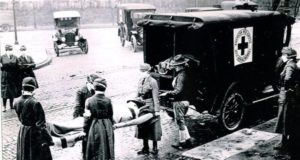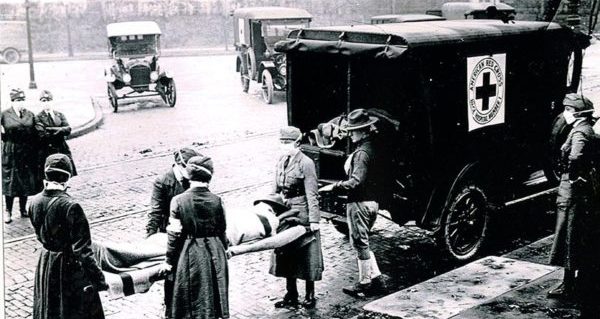Just like today, the province advised people to avoid large public gatherings, leading to the closures of schools, many businesses, and some church services. As well, ads in local papers instructed people on creating their own face masks. However, as the world experienced its “War to End All Wars” in World War I, life continued on and factories continued to run. “There was a major war effort; factory production was not shut down; business largely continued and there was never any attempt to shut down life across the board that we’re seeing today,” Humphries says.
Due to their isolation, many rural areas in Alberta experienced difficulty with obtaining food, leading many to die from neglect as they starved. Today, Canada’s robust supply chain ensures that these areas will continue to receive supplies. Alberta Agriculture Minister Devin Dreeshen assured Alberta residents last week that “our food supply will remain safe, secure and accessible. Food is essential and we are in constant contact with our food suppliers and we will do whatever it takes to keep them open.”

Nurses carry away the dead during the 1918 pandemic.
With inconsisent communication systems, many Alberta residents relied on small, local papers to receive news about the pandemic and the war effort. Many small papers received information from The Canadian Press to provide up-to-date information to their readers. Today, citizens are seeing massive amounts of misinformation on the internet and are turning to media, especially local newspapers, to distinguish between reliable information and fake news.
Despite the high infection rate of the 1918 pandemic, with an estimated one-third of the population contracting the virus, many did not view it as any worse than other diseases that were a major concern at the time, such as measles. With any diseases now less severe due to vaccines and other treatments, the current COVID-19 pandemic is receiving a much stronger response from the general public, the press, and world governments.
You can learn more about the 1918 pandemic here.
For more pieces like this, subscribe to the Grizzly Gazette here.

